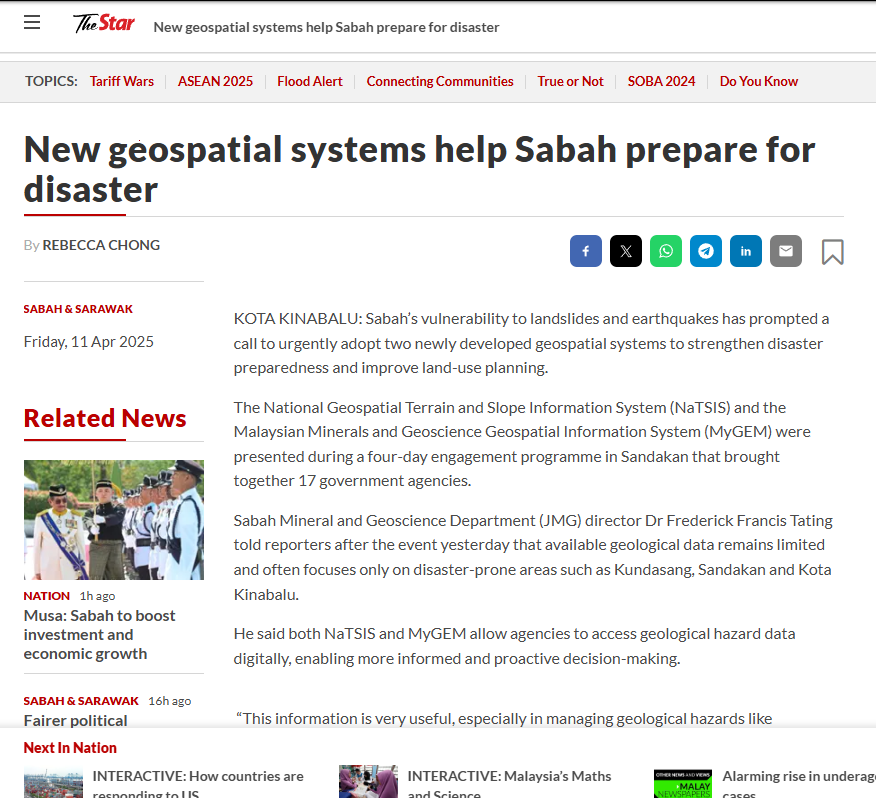
KOTA KINABALU: Sabah’s vulnerability to landslides and earthquakes has prompted a call to urgently adopt two newly developed geospatial systems to strengthen disaster preparedness and improve land-use planning.
The National Geospatial Terrain and Slope Information System (NaTSIS) and the Malaysian Minerals and Geoscience Geospatial Information System (MyGEM) were presented during a four-day engagement programme in Sandakan that brought together 17 government agencies.
Sabah Mineral and Geoscience Department (JMG) director Dr Frederick Francis Tating told reporters after the event yesterday that available geological data remains limited and often focuses only on disaster-prone areas such as Kundasang, Sandakan and Kota Kinabalu.
He said both NaTSIS and MyGEM allow agencies to access geological hazard data digitally, enabling more informed and proactive decision-making.
“This information is very useful, especially in managing geological hazards like landslides and earthquakes,” he added.
The department has also worked with universities, the Public Works Department (JKR) and other technical agencies to produce a Seismic Hazard Map – a key reference used by engineers in earthquake-prone zones.
“This information is used by engineers to design earthquake-resistant structures. We’ve identified several areas with a high risk of seismic activity such as Kundasang, Ranau, Kudat and Lahad Datu,” said Dr Frederick.
He said mapping of landslide-prone zones has been ongoing since 2016 under a national project, with areas like Kota Kinabalu and Kundasang already assessed and shared with local authorities.
In Sandakan, a separate study is under way to assess slope stability and identify danger zones.
“From our initial observations, we expect this area to have potential risks. Once the study is completed, we’ll be able to determine which locations have low, moderate or high landslide hazard levels,” Dr Frederick said, adding that areas like Pecky Bailey are among those being actively monitored.
Sabah Rural Development Ministry deputy permanent secretary Patricia Vain said NaTSIS is already being used in development planning to avoid high-risk areas.
“NaTSIS gives us the data we need to identify areas exposed to geohazards. The government uses this to avoid building in known red zones. This helps reduce the risk from the start,” she said.
She added that when a development site is proposed, the ministry consults JMG to determine if the location carries any geological hazards.
Sabah Civil Defence Force (APM) deputy director Lt Kol Erwin @ Elverowen Kinsui said the geospatial systems are now being used in simulations and response planning.
“Geological data is extremely valuable for disaster management in Sabah and across Malaysia.
“We use this data, especially through NaTSIS, to support early planning and public awareness, particularly for communities living in high-risk or hotspot areas,” he said.
APM is working on a disaster command centre and plans to integrate NaTSIS for real-time monitoring and better coordination, he added.
Sabah has recorded several landslide incidents this year, mostly triggered by continuous heavy rain.


